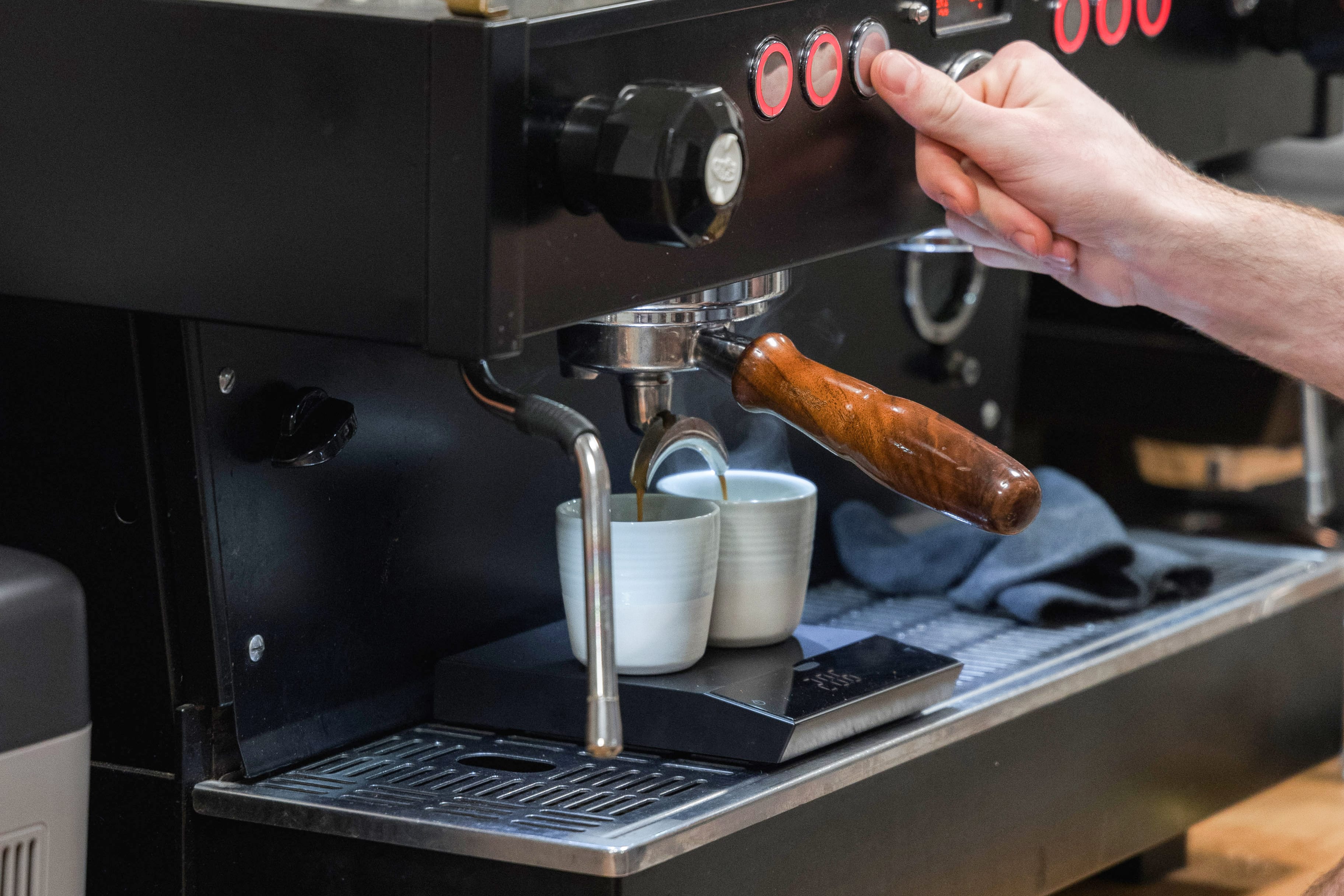on all orders over £150
on all orders over £150

The UK Barista Championship showcases the top baristas’ skills in espresso and milk beverages. The challenge of this competition is preparing and serving four espressos, four milk drinks, and four signature beverages all within 15 minutes. The competing baristas are judged on a sensory and technical level, creating a comprehensive assessment of the quality of the drinks and the movement from grinders to espresso machines.
Brewed by Hand was able to chat with Ted Longden, from WatchHouse, and learn more about his career in coffee, extensive training for the competition, and final routine. Continue reading to learn the technical details of his routine, as well as his equipment chosen to prepare and serve.

Where to start? I guess I should say that I’ve been in coffee for around 5 years, which being 20 years old, is quite a chunk of my life! After bouncing around cafes and roasteries, in October ’21 I joined WatchHouse, in the Tower Bridge store. This was to focus more on the barista role, with the goal of becoming a more well-rounded barista; competition seemed a catalyst to this.

Semi-finals prep was intense... long days behind the bar followed by evenings in the lab. I shared my lab time with my coach Ryan and right-hand-man Josh, spending our time roasting coffees, brewing coffees, and refining the performance. The coffees we ended up choosing were from Finca Mikava, a farm owned by Paul Doyle in Colombia. WatchHouse had bought both Paul’s Gesha and his Sudan Rume. I used his previous harvest of Gesha in the heats and fell in love with its distinctive fruit character. The new lot felt like a more refined version – more floral and citrus driven. Although the Gesha was phenomenal, I kept coming back to the Sudan Rume – I hadn’t tasted anything like it... think big, heavy body, sugary sweet and herbal. Ryan drew comparisons to the Eugenoides that performed so well at the World Championships last year.
I started blending the two – and although 95% of these experiments didn’t work, the other 5% showed real promise. The Gesha brought all the acidity, florality, and fruit character, with a little bit of Sudan Rume (10% - 30% of the blend) bringing its distinct sweetness. We used this 70/30 (Geshe/Sudan Rume) blend for espressos and took the Sudan Rume up to a 40/60 blend for the milk course, as we found it cut through milk slightly better.

We served the espressos in the Loveramics Egg Potters Espresso Cups (granite colour) – these were really great. Ergonomic to move around quickly behind the machine, comfortable to drink out of, and aesthetically very pleasing.
The milk drinks, we served in the Loveramics Dale Harris Espresso Tumblers. These are my favourite cups for short milk drinks. Easy to pour simple, quick latte art in as the competition doesn’t reward complex pours enough to be worth their time. They held a single espresso and 45-65g of milk. On the day we chose around 52g of milk, as this is where we found the most harmonious balance.

Scale wise – the Felicitas were the workhorses and unsung heroes. I’m quite fussy with my scales; and the Felicitas seemed to fit every demand I had. They were compact and had a very small footprint behind the bar – but didn’t compromise any functionality. I weighed my doses in small dosing cups, which sat on top of the Felicita Incline scales – these read fast and gave me consistently accurate measurements. They didn’t slip around, and I could clearly read everything with a good screen.

I weighed my espressos on the Felicita Arc scales. These are small and lightweight – easy to pick up and move one handed which is crucial as so often we are multitasking behind the bar. They are quick to tare and to react, and the display is as clear as can be. I was actually very happy with the trust I had in these scales – I knew if I charged them up, they would perform on the day.
